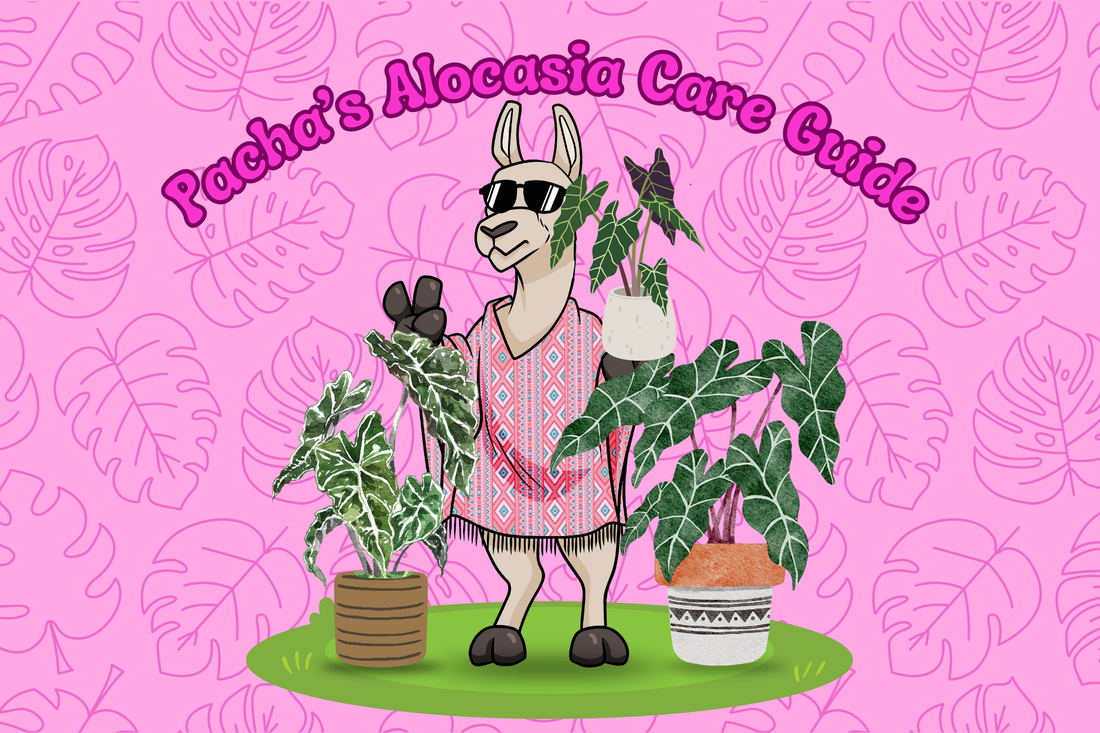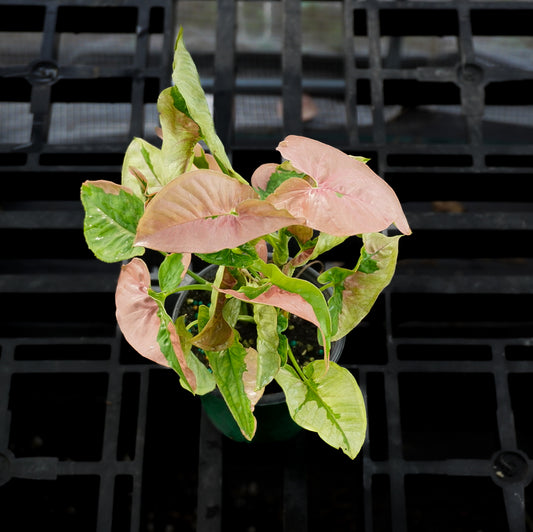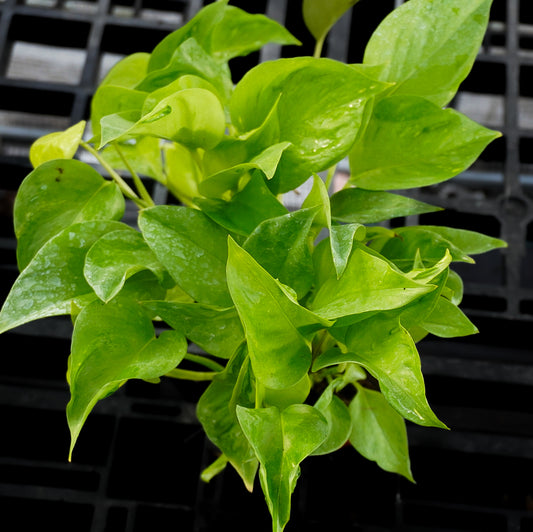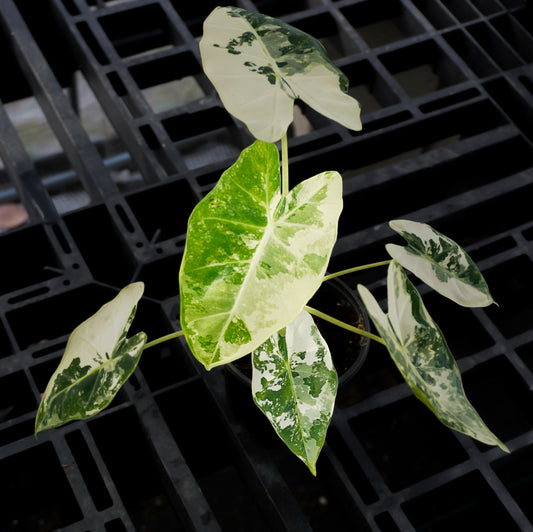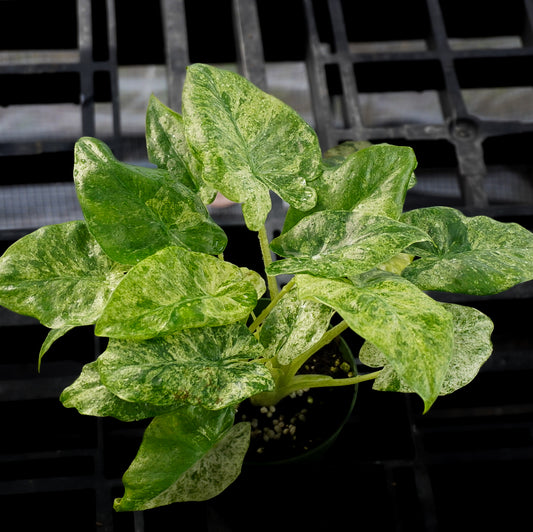Alocasia Care Guide
Pink Poncho Plantery Guide: Caring for Your Alocasia
Alocasias are bold, dramatic plants with stunning foliage that make a statement in any plant collection. From the striking Alocasia Polly to the rare Alocasia Dragon Scale, this guide will help keep your plant thriving! 🌿💖
Light Requirements
🌱 Common Alocasias: Prefer bright, indirect light but can tolerate some dappled sunlight.
🌟 Variegated & Exotic Alocasias: Need brighter indirect light to maintain color and patterns.
💡 Avoid direct sun exposure, which can scorch leaves.
Watering
- Water when the top 2 inches of soil feel dry (typically every 7-10 days).
- Keep soil evenly moist but not soggy—Alocasias are prone to root rot.
- Use filtered or distilled water if you notice brown tips or edges.
🌟 Dormancy Alert: In colder months, Alocasias may enter dormancy and require less water.
Humidity & Temperature
🌿 Alocasias thrive in high humidity (60-80%).
🌟 Exotic types (e.g., A. Frydek, A. Dragon Scale) need extra humidity—use a humidifier or pebble tray.
🌡 Ideal Temperature: 65-85°F (18-29°C). Avoid cold drafts and dry air!
Soil & Potting
A well-draining, airy mix is best:
- 40% orchid bark
- 30% perlite
- 20% coco coir or peat moss
- 10% charcoal (helps prevent root rot)
📌 For rare Alocasias, use terracotta pots or breathable containers for better airflow.
Fertilization
🌱 Use a balanced liquid fertilizer (20-20-20) every 2-4 weeks in spring and summer.
🌟 For variegated types, dilute fertilizer to half-strength to avoid leaf burn.
🛑 Over-fertilizing can cause excessive green growth, reducing variegation.
Pruning & Maintenance
- Remove damaged or yellowing leaves to redirect energy to new growth.
- Wipe leaves with a damp cloth to remove dust and enhance photosynthesis.
- If your Alocasia drops leaves, check humidity and watering habits—this is common in stress periods or dormancy.
Support & Growth
🌱 Some large Alocasias (e.g., A. Odora, A. Macrorrhiza) benefit from stakes or moss poles for upright support.
- Rotate regularly to ensure even growth and prevent leaning.
Propagation (For Both Green & Variegated Types)
- Best propagated through corm division or rhizome separation.
- Gently remove offsets (baby corms) and plant them in moist sphagnum moss or well-draining soil.
- Variegated Alocasias should be propagated from corms that retain variegation.
💡 Corm Propagation Tip: Keep humidity high for faster root development.
Common Problems & Solutions
| Issue | Cause | Solution |
|---|---|---|
| Yellow leaves | Overwatering | Allow soil to dry slightly between waterings |
| Brown edges | Low humidity or hard water | Increase humidity, use distilled water |
| Drooping leaves | Stress, low light, or under-watering | Check soil moisture, adjust light |
| Spider mites | Dry air, poor airflow | Increase humidity, wipe leaves, use neem oil |
| Leaf loss | Dormancy or environmental change | Reduce watering and wait for spring growth |
Popular Alocasia Varieties
🌿 Alocasia Polly (Amazonica) – Compact with dramatic veined leaves.
🌱 Alocasia Frydek – Velvety deep green foliage with white veins.
🌟 Alocasia Dragon Scale – Rare, textured silver-green leaves resembling dragon skin.
✨ Alocasia Maharani – Small, leathery leaves with a unique bluish tone.
💛 Alocasia Zebrina – Striking zebra-striped stems with large arrowhead leaves.
🌿 Alocasia Macrorrhiza – Giant elephant ear with impressive height.
For more plant care tips, visit Pink Poncho Plantery and let Pacha the llama guide you to your next leafy treasure! 🦙🌿💖
Happy planting! 😊
